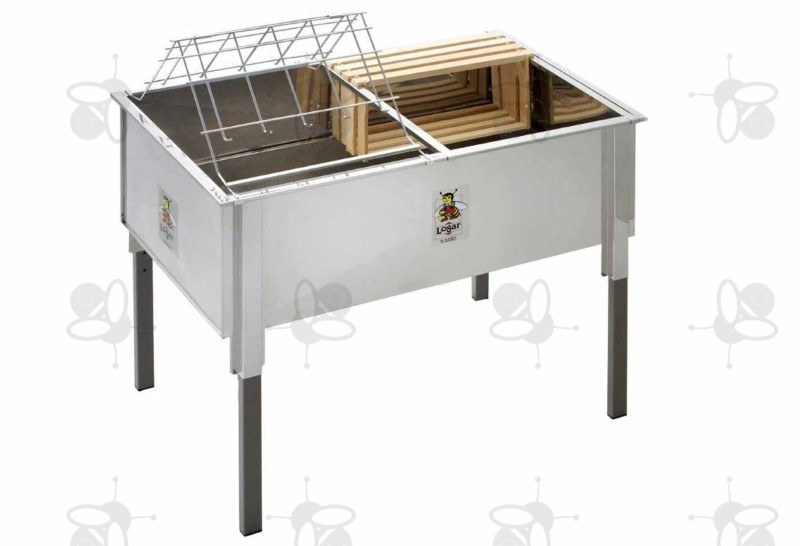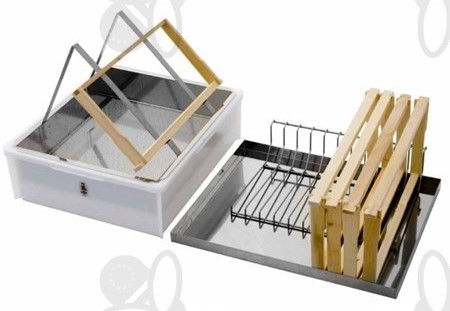Uncapping is the process of removal of the thin beeswax covering from the honey frames or known as the cappings in order to expose the honey. You will only be able to extract the honey once it is exposed with the use of the right equipment and tools including the uncapping trays.
Table of Contents:
Dry vs. Wet Cappings
Capping wax refers to the thin new layer of wax that bees form on the top of the dried or cured honey. Even though bees cap the brood cells one by one, honey cells are capped in group. After a comb area is ready for capping, the bees may then cover several square inches at the same time. It is this different kind of capping that is partially responsible for honeycomb’s flatter surface that makes it different from that of brood comb.

Based on the bees’ genetics, they may directly put the capping wax on the honey’s surface or they might also leave a small pocket of air between the wax and the honey’s surface. There is no difference in terms of the quality, color, and flavor of the honey in these two methods but they can result to dramatically different appearances of the finished combs.
A honeycomb that has air pockets is deemed to have dry cappings, with the comb seemingly very light tan or white. On the other hand, honeycomb that has wet cappings is not really wet although it may appear as If it is. It has a darker appearance and might have the variegated pattern because of the scattered small air pockets that are lighter in color.
Although there are bees that produce these two kinds of capping, there are some that constantly build one type or the other. For instance, the Italian honey bees or Apis mellifera ligustica have been known to produce dry caps in white. The Caucasian bees or Apis caucasica are on the other end of the spectrum as they almost exclusively produce wet caps.
Comb honey producers have discovered that majority of consumers like dry cappings. Particularly during the glory days of production of honey comb, beekeepers discovered that they can get better prices for their clean looking and light-colored combs. The desire and demand for the white combs is among the main reasons why Italian bees have become very famous in the US.
The practice of the production of chunk honey that is only a piece of honeycomb soaked in extracted was one of the ways that beekeepers use for selling their wet-capped honey.
Uncapping Trays for Safe Capping Removal
It is important to minimize damage to frames during uncapping because the drawn comb can be reused to help give the bees a good head start on box refill. A bucket or tank is needed for collecting the cappings. Aside from uncapping trays, uncapping tanks are also popular tools for beginners for holding the frames and collecting the cappings.
The honey should be strained from the cappings then added to the harvest since these cappings contain lots of honey. The strained out beeswax should be rinsed with water then save in the freezer or refrigerator to melt to beeswax cakes later on.

